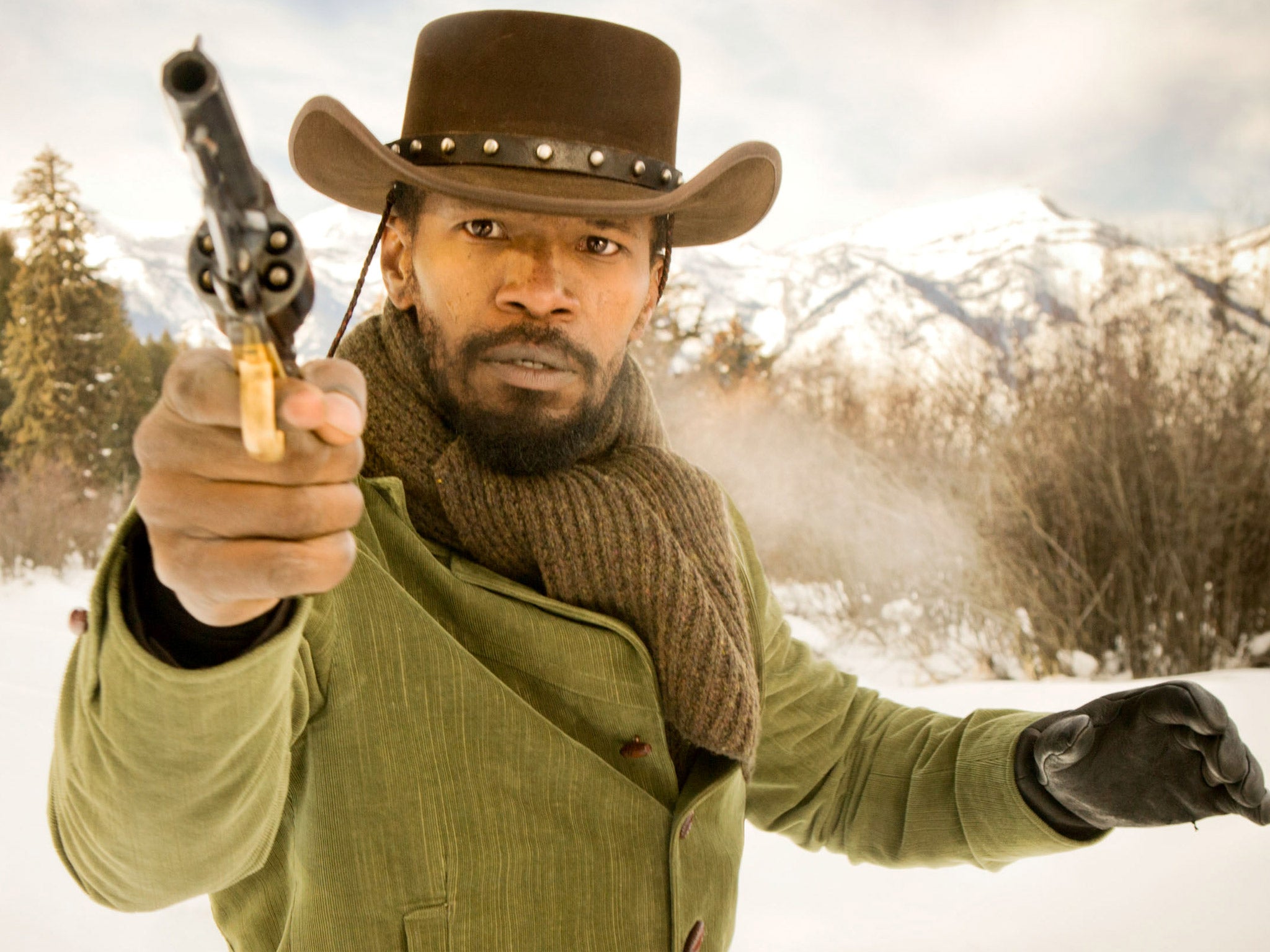Django Unchained and the dated shooting devices that no longer hit the target
Plus: small is beautiful for Strindberg and why critics' cliches leave us cold

I found myself thinking again the other day about the perishability of film-grammar. It was watching Django Unchained that did it – Quentin Tarantino's bloody, cheerfully vulgar homage to the spaghetti Western. It's full of allusions to a film-making style that he clearly loves, the most conspicuous of which are crash-zooms, or super-fast zoom-ins, a bit of film language that now looks to us as irretrievably dated as knitted tank tops and platform boots. And thinking about those self-consciously antique dabs of style, I remembered seeing Peter Strickland's film Berberian Sound Studio last year and also wondering then what it was that divided the durable devices of cinema from the transitory and merely fashionable ones.
On the one hand, you have something like a tracking shot – which individual directors can easily do without, but which remains, year-in, year-out a familiar part of cinema syntax – and on the other you have the whip-pan and the crash-zoom, inventions of style that now seem irretrievably antiquated. I'm not even sure it's possible to use a crash-zoom un-ironically anymore, without the accompanying sense that a director is trying on a foreign "accent".
One answer to this question might be that it's just too early to say. Fashion doesn't look like fashion when you're in the thick of it, after all, so it's possible that one day the crash-zoom will have lain fallow for long enough to be employed without a self-conscious sense of film history. Is the iris-out wipe -– that edit beloved of silent cinema – gone for ever or might it too one day be employed again, without bringing with it an overtone of the antique? Both are possible I suppose but it doesn't really feel as if it's likely and it still doesn't address the underlying question as to why some camera movements are timeless while others appear so time-soaked that they can only be used in an allusive manner.
Violence must have something to do with it, and not the violence of what's depicted on screen but the violence with which our own perceptions are wrenched about by the technology. A tracking shot is, after all, a motion of the camera that adapts itself to the way we look when we're not in the cinema. The Steadicam of our head supplies one every time we walk down the street or look out of a train window.
The crash-zoom, on the other hand, is an attempt to re-create on screen an effect that has no real visual equivalent in daily life – the sudden mental concentration on a single detail in a large scene. When you watch a slow pan on screen, it isn't actually what you see in real life if you turn your head (Try it. Our version is actually a series of overlapped edits smoothed by cerebral post-production into something less jerky). But it's close enough to pass. A crash-zoom, by contrast, insists that what you're watching has come through a camera.
Did it ever feel natural, I wonder? Or was it always a mannerism that stuck out of the flow of the film in a self-advertising way? And if the latter is true, might that be one component of cinematic gestures with a short shelf life? If you're ignorable you'll endure. If you're not you'll have a short glittering career, fussed over by the fashionable and appearing in all the smartest places, before another novelty comes along and you're just raw material for a nostalgia quiz. That's what the crash-zooms in Django Unchained feel like. "Oh, remember them!" you think, "They used to be everywhere!"
Perhaps it was just a phase that film went through, an answer to the question "Is this all there is?" And only after experimentation could they go back to what had worked all along. I hope so anyway. I never liked tank tops either.
Small is beautiful for Strindberg
Calculating the optimal distance from an actor rather depends on the actor concerned, obviously. Some performers are best experienced from across the English Channel. But a recent visit to Trafalgar Studio Two, to see Strindberg's Dance of Death, reminded me just how enjoyable proximity can be when the actors are good. I don't suppose it's the smallest theatre in London but it must be close and you're rarely much more than 10 feet from the performers. The odd thing is that the economics of the theatre tend to deliver this intimacy as a budget affair, when in some ways it should be priced as a scarce luxury. Go small occasionally this year. It can be fascinating.
Why critics' cliches leave us cold
"Heartwarming and uplifting," runs a quote attributed to Classic FM in the advertising for Dustin Hoffman's film Quartet. On reading which my heart chills and I get a sinking feeling. I'm not so Scrooge-like that the cockles don't occasionally kindle and there are films that leave you feeling a little elevated. But would it be possible to describe them in a way that doesn't make them sound dreadful? Cinema advertising rarely diverts far from clichés of praise, but there's something about these ones - with the faint implication that the audience will have its moral defects repaired - that is peculiarly offputting. In Quartet's case, I don't think I'll risk it. Too many critics appear to have emerged as chilly and low-down as when they went in.
Join our commenting forum
Join thought-provoking conversations, follow other Independent readers and see their replies
Comments
Bookmark popover
Removed from bookmarks